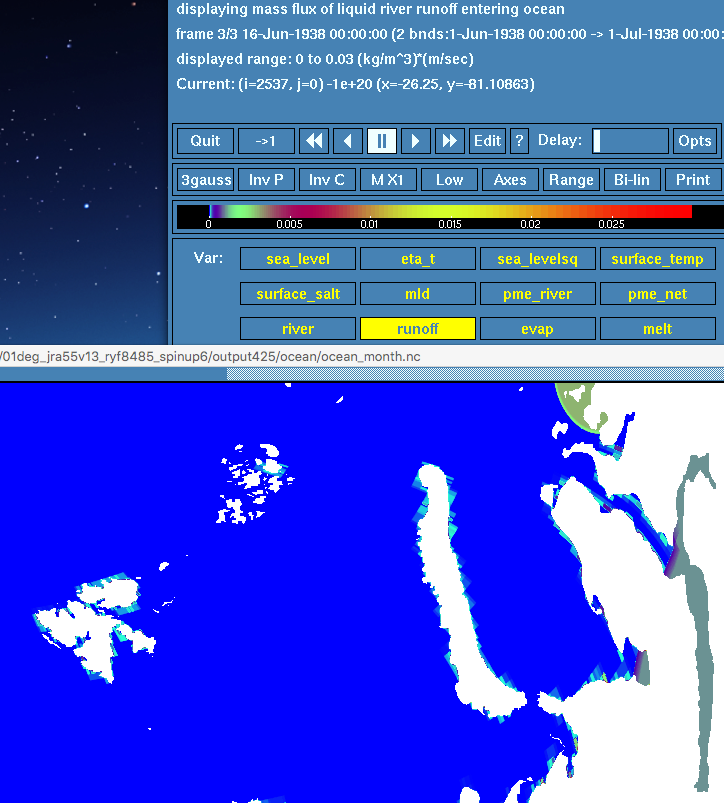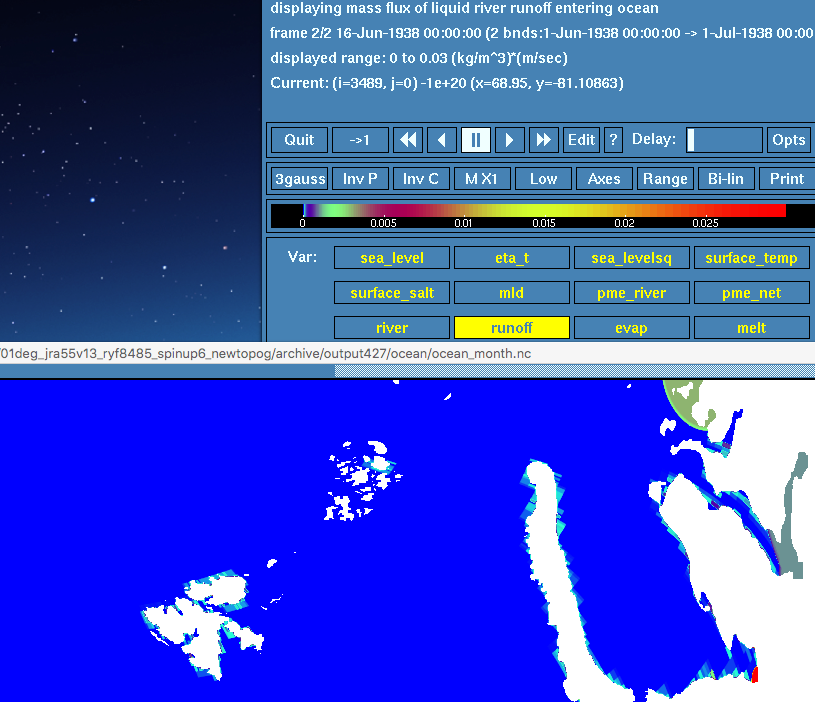I prefer the third option above because it is more general and shouldn't be too hard to implement - we just need to change our the distance measure used in the nearest neighbour calculation. However, we we have a file with land topography presently? I guess there is no harm in introducing one.
This is probably not an important issue but I thought it worth noting anyway. In #126 we removed the upper Gulf of Ob. It looks like some of the runoff that should go the the truncated Ob is being misdirected to Baydaratskaya Bay to its west, presumably because this is closer.
Here's the runoff with the old topography ( The Gulf of Ob has hit its regional cap of 0.001, which seems to have erroneously spread runoff into Baydaratskaya Bay to its west, but this is not the issue I'm concerned with (because I think it can be fixed by increasing the Ob regional cap).
The Gulf of Ob has hit its regional cap of 0.001, which seems to have erroneously spread runoff into Baydaratskaya Bay to its west, but this is not the issue I'm concerned with (because I think it can be fixed by increasing the Ob regional cap).
/g/data3/hh5/tmp/cosima/access-om2-01/01deg_jra55v13_ryf8485_spinup6/output425/ocean/ocean_month.nc)Here's the runoff for the same month (and runoff caps) but with the truncated Ob ( Now we have runoff hitting the global cap of 0.03 in Baydaratskaya Bay, which I think means that runoff is being sent directly there from land points (rather than via the subsequent capping step). (We hit the global cap because the Ob cap doesn't extend into this bay.)
Now we have runoff hitting the global cap of 0.03 in Baydaratskaya Bay, which I think means that runoff is being sent directly there from land points (rather than via the subsequent capping step). (We hit the global cap because the Ob cap doesn't extend into this bay.)
/short/v45/aek156/access-om2/archive/01deg_jra55v13_ryf8485_spinup6_newtopog/output427/ocean/ocean_month.nc)/g/data1/ua8/JRA55-do/RYF/v1-3/RYF.runoff_all.1984_1985.ncshows significant runoff at the head of the Gulf of Ob (e.g. see red dot):Possible fixes (if we think this is important enough):